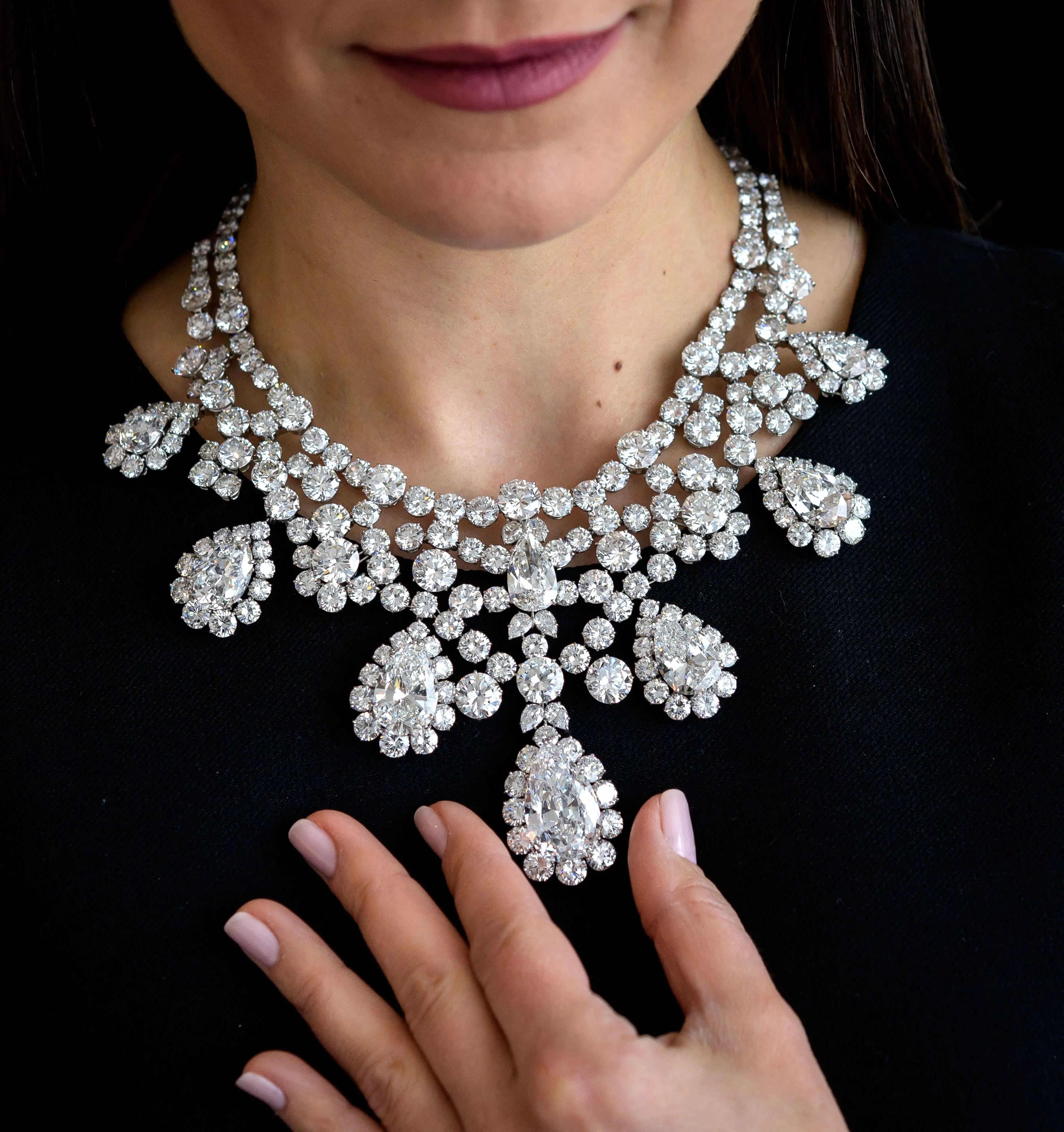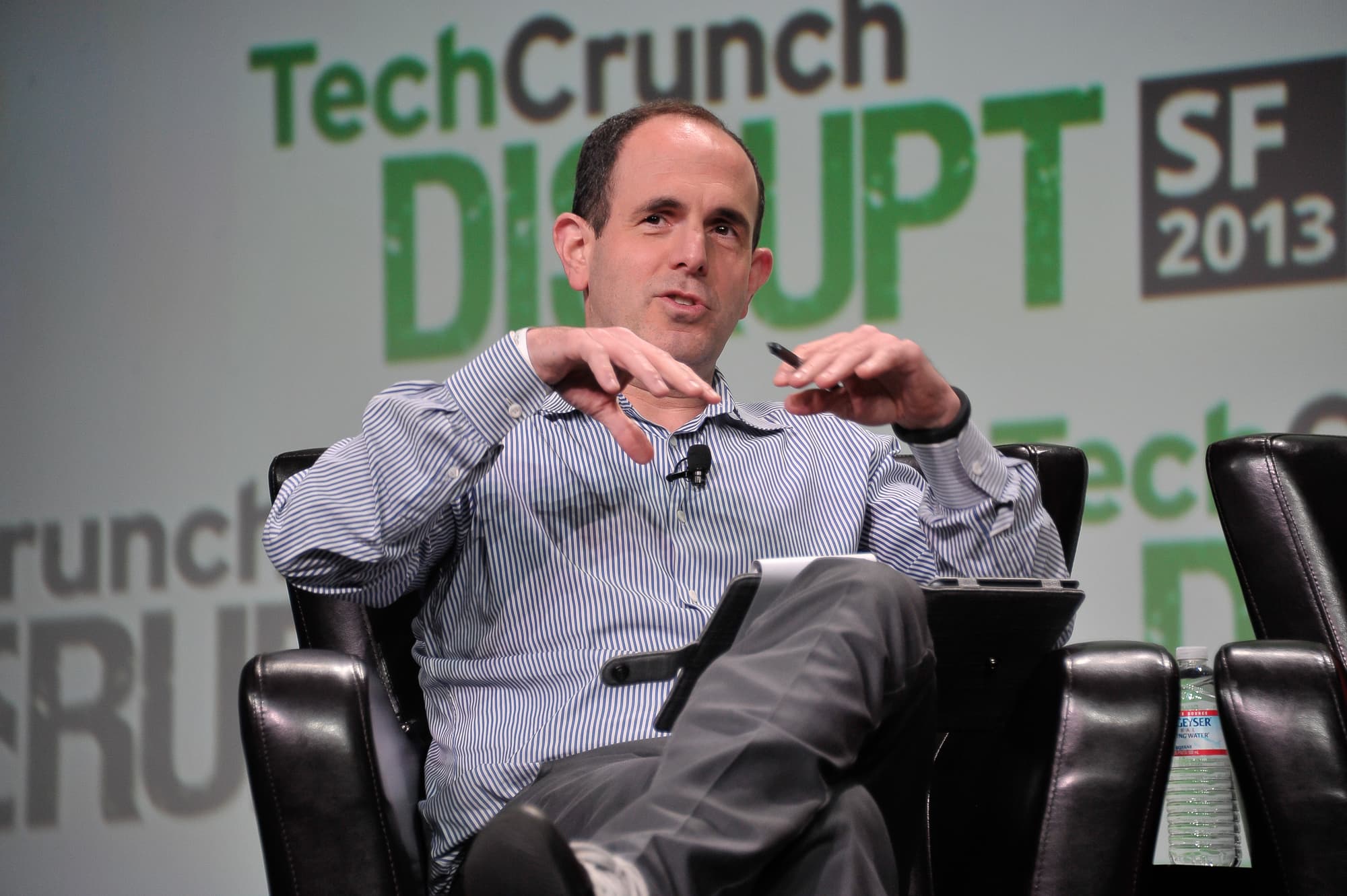By Melanie Abrams
Copyright thejc

When Marilyn Monroe sang “Diamonds are a girl’s best friend,” in the iconic 1953 film. Gentleman Prefers Blondes, she immortalised several jewellers that she named: Tiffany’s, Cartier and of course Harry Winston, who she prayed to “tell me all about it.” [Missing Credit] Now these jewellers feature in a new encyclopaedia published by Phaidon on 24 September. Called The Jewelry Book, 300 jewellery personalities are listed from A to Z with around 30 of them Jewish. The afore-mentioned Harry Winston is a case in point. Born as Harry Weinstein in 1896 to Russian Jewish émigrés, he changed his surname to Winston in 1920 and opened his eponymous business in 1932. In 1944, he lent Jennifer Jones diamonds for that year’s Oscar ceremony, where she won the best actress award for The Song of Bernadette, becoming one of the first jewellers to recognise the power of the red carpet. “He was a kind person, always helping out,” recalled his son, Ronald Winston in an earlier interview with the New York Times. For example, he sponsored Claude Arpels, one of the Jewish heirs to Van Cleef & Arpels, “in fleeing France and getting into America” during World War II, according to Ronald Winston in his biography of his father. Released by Skyhorse Publishing in 2023, the book is called King of Diamonds as the jeweller was known. (Van Cleef & Arpels also features in the new encyclopaedia). LONDON, ENGLAND – MAY 15: Caroline de Guitaut, Curator of Royal Collections, holds the Cullinan III and IV Broach at The Queen’s Gallery, Buckingham Palace on May 15, 2012 in London, England. Jewellery, made from the largest diamond ever found, will be shown to the public at the ‘Diamonds: A Jubilee Celebration’ exhibition which is part of the Summer Opening of Buckingham Palace from June 30th – 8th July 2012 and July 31st – October 7, 2012. Celebrating Queen Elizabeth II’s Diamond Jubilee the exhibition will showcase seven of the 9 stones cut from the Cullinan Diamond – the remaining two from part of the Crown Jewels. (Photo by Peter Macdiarmid/Getty Images)Getty Images Now part of the Swatch Group, alongside watch brands like Omega and Breguet, “the brand still loves its big flawless diamonds and the cluster setting, which they are famous for,” says Melanie Grant, editor of The Jewelry Book. And “still embodies the spirit of wonder and that he had,” she says. Alongside Harry Winston, there are other creators, collectors, style icons, and cutters – as well as those making jewels behind the scenes for the leading houses like Manhattan based Carvin French led by its Jewish French co-founder, André Chervin and more. According to Grant, she wanted to include “visionaries and luminaries who had made the greatest impact on jewelry during the last two centuries,” she says, which, she adds, “was no easy feat.” Although there are exceptions like Florentine, Benvenuto Cellini (1500 – 1571) who is included as “one of the greatest goldsmiths and sculptors of the Italian Renaissance,” according to the book. [Missing Credit] Other criteria included “wider cultural influence through specific aesthetic trends, the implementation of pioneering techniques, recognition for those previously overlooked and an eye towards emerging designers who are moving jewelry in a new direction,” Grant writes in the book. One such innovator was Amsterdam born, Jewish gem dealer and diamond cutter, Jacob Asscher who created the fancy Asscher cut in 1902. The recognisable near octagonal shape, cropped corners and step-facets are still sought after. Today his family run the Royal Asscher Diamond Company – surviving against the odds after the Nazis seized the business assets in 1941 and deported most of the family and master polishers to concentration camps and death. Only 15 of 500 master polishers survived. A 17-strong advisory panel of gallerists, curators and others helped Grant choose the personalities. One was Katherine Purcell, co-managing director of Jewish-owned family firm, Wartski in London. Specialising in antique jewelry and jewelry and objets d’art by Peter Carl Fabergé, the gallery was founded 1865 by Morris Wartski, who emigrated from the volatile Polish town of Turek, then under Russian rule to Bangor in North Wales. NEW YORK, NEW YORK – SEPTEMBER 09: Iris Apfel sits for a portrait during her 100th Birthday Party at Central Park Tower on September 09, 2021 in New York City. (Photo by Noam Galai/Getty Images for Central Park Tower)Getty Images for Central Park To Being amongst the 300 in the book is “a seal of recognition at the highest level and, sort of, like a validation of all of my values and vision that I had from the start,” says Lagos-born, London based jeweller, Thelma West whose signature piece is a pearl-shaped diamond ring on black ceramic with its high-low materials. “You want to make a lasting mark in jewelry history and this is how you do it. You make small imprints and they lead to bigger things,” she says. West became Jewish in 2015 with Whetstone’s Sha’arei Tzedek North London Reform Synagogue, after being embraced by a Jewish family in Antwerp where she was studying how to grade diamonds. “It was the warmth of the people I met,” she says, so she wanted to continue that spirit and “make it real to me,” she says. GENEVA, SWITZERLAND – NOVEMBER 7: A superb sapphire, purple sapphire and diamond ring by JAR. (estimate CHF 300,000 480,000) is displayed during the Sotheby’s Geneva Luxury Week press call on November 7, 2024 in Geneva, Switzerland. Sotheby’s unveiled this morning a selection of its top lots, representative of its Luxury Sales week in Geneva which officially opens tomorrow. The unveiling showcased pieces from Sotheby’s four main Geneva Luxury Live Sales this autumn, namely the Important Watches taking place on Sunday 10th November, the main bi-annual fine watches sale; Treasures of Time, a single owner sale featuring some of the rarest Patek Philippe watches seen in decades also held on the 10th November; the Magnificent Jewels sale which will take place on Wednesday morning, 13th November followed by the much anticipated Royal & Noble Jewels sale later that afternoon. Among the outstanding lots, the most talked about so far this year and the top lot of the Royal and Noble Sale is the rarest and historically most important 18th century diamond necklace formerly in the collection of the Marquess of Anglesey. This necklace may have links via its incredibly rare Golconda diamonds to the infamous Affair of the Necklace which precipitated the fate of Queen Marie-Antoinette. The necklace is estimated between 1.6 M 2.2 M CHF. The selection also includes a large number of pieces of jewellery formerly in the collection of Tsar Ferdinand of Bulgaria which have never been seen in public before, including a tie pin (estimate 1.6 M 2.2 M CHF) displaying four impressive coloured diamonds. (Photo by Robert Hradil/Getty Images for Sotheby’s)Getty Images for Sotheby’s Her Jewish connections have helped develop her business too, she says. Her first job grading diamonds in Hatton Garden was with a Jewish firm where, she says, she “learnt the art of the deal.” Whilst the wholesale diamond company, Yeraua, which she co-founded with now Tel Aviv based Lior Alkouby has helped her pick suppliers for her eponymous business, which she started in 2012. Other famous Jewish jewellers who also appear in this list of 300 include Joel Arthur Rosenthal, known as JAR, who was dubbed by Sotheby’s as “one of the most renowned contemporary jewelry designers of the 21st century.” And queen of bling, Lorraine Schwartz, whose big diamond rocks adorn Hollywood’s A list on many a red carpet or catwalk. Then there’s the vintage retailer, Fred Leighton aka Murray Mondschein. His chunky crescent moon and star earrings from about 1880 to 1890 worn by Kirsten Dunst in Sofia Coppola’s 2006 film, Marie Antoinette will be on show at London’s Victoria and Albert Museum from tomorrow [20 September] to 22 March 2026 in its sprawling exhibition of the iconic French queen’s style. Works by French jeweller Andre Chervin and his New York atelier, Carvin French, are displayed at an exhibition at the New-York Historical Society in New York on September 6, 2023. Born in Paris in 1927, Andre Chervin immigrated to New York in 1951, and three years later, with another apprentice French jeweller Serge Carponcy, founded the Carvin French workshop in the heart of Manhattan. The retired nonagenarian is unknown to the public, but revered by his clients: luxury jewelry giants Tiffany and Co., Van Cleef and Arpels, Cartier, Bulgari, Verdura and Asprey. Works by Chervin and his atelier will be displayed at the New-York Historical Society during the exhibition “Enchanting Imagination: The Objets d’Art of André Chervin and Carvin French Jewelers”. (Photo by Ed JONES / AFP) (Photo by ED JONES/AFP via Getty Images)AFP via Getty Images The edgiest jeweller in the book is also Jewish: father and son duo, Gabby and Elan Pinhasov of Gabby Elan Jewelry. They make custom grillz for the likes of Marc Jacobs, Pharrell Williams and others. Starting as a dental technician in Israel, Gabby Pinhasov moved to New York in 1990 and founded the business the following year. Some Jewish jewellers in the book have beaten all odds to make a name for themselves in their time and to have a legacy. Like Kyiv born, Joseph Marchak (1854 – 1918) whose vibrant, nature inspired pieces led him to become official supplier to the Tsar and nicknamed the Cartier of Kyiv during the height of the pogroms. Jewish jewelry collectors feature too. Like Lily Safra, who elevated the profiles of many a jeweller including JAR. The Brazilian born philanthropist and socialite was married to private banker husband Edmond J. Safra who died in a fire at their Monaco penthouse in 1999. Their foundation endowed the Edmond J. Safra campus at the Hebrew University of Jerusalem and more. Works by French jeweller Andre Chervin and his New York atelier, Carvin French, are displayed at an exhibition at the New-York Historical Society in New York on September 6, 2023. Born in Paris in 1927, Andre Chervin immigrated to New York in 1951, and three years later, with another apprentice French jeweller Serge Carponcy, founded the Carvin French workshop in the heart of Manhattan. The retired nonagenarian is unknown to the public, but revered by his clients: luxury jewelry giants Tiffany and Co., Van Cleef and Arpels, Cartier, Bulgari, Verdura and Asprey. Works by Chervin and his atelier will be displayed at the New-York Historical Society during the exhibition “Enchanting Imagination: The Objets d’Art of André Chervin and Carvin French Jewelers”. (Photo by Ed JONES / AFP) (Photo by ED JONES/AFP via Getty Images)AFP via Getty Images Whilst jewelry wearers veered from Bulgari ambassador, Zendaya to New York textile entrepreneur and interior designer, Iris Apfel, who became instantly recognised in her 90s with her distinctive oversized glasses and flamboyant style including armfuls of chunky bangles. “The jewelry she wore wasn’t even precious, but it didn’t matter,” says Grant. There are some surprising names in there too like the Jewish fashion photographer, Irving Penn. Better known for images like the harlequin dress or his close-up of Pablo Picasso, “he changed the way jewelry was portrayed in magazines, giving it a surrealist touch,” says Grant, for example, “with pear shaped diamonds cascading as droplets from a leaky tap,” she says. Many Jewish characters in the book inspired others. Like London based rock n’ roll jeweller, Hannah Martin who riffs off Man Ray’s unconventional Surrealist approach for pieces like her including a £3,100 sterling silver ring 18 carat yellow gold studs that turns the punk wrist strap into fine jewelry. Born Emmanuel Radnitzky in 1890, Man Ray is also in the book for his typically irreverent jewelry – like the gold-plated sterling silver Optic-Topic mask with velvet and leather ribbons conceived in 1974 and executed in 1978 after his death, as a nod to the aluminium masks worn by 1930s racing drivers. 10304[Missing Credit] “One may think that the mask completely disrupts the wearer’s vision due to the fact it lacks the transparency of a tinted glass, but the reality is that the viewer is in absolute control of everything they see,” says Louisa Guinness on her gallery website. Jewish jewellers continue to push boundaries. Take the barely there detailing in Graff’s latest high jewelry collection, where lines of pavé emeralds hide within the white gold, diamond accented concentric ovals to hint at the 65-year-old house’s signature colour: green. Jewelry has certainly given the Jewish community “freedom to be how you want, go where you want and wear as much jewelry as you can possibly manage,” says Grant. The Jewelry Book is edited by Melanie Grant and published by Phaidon, £59.95, www.phaidon.com



